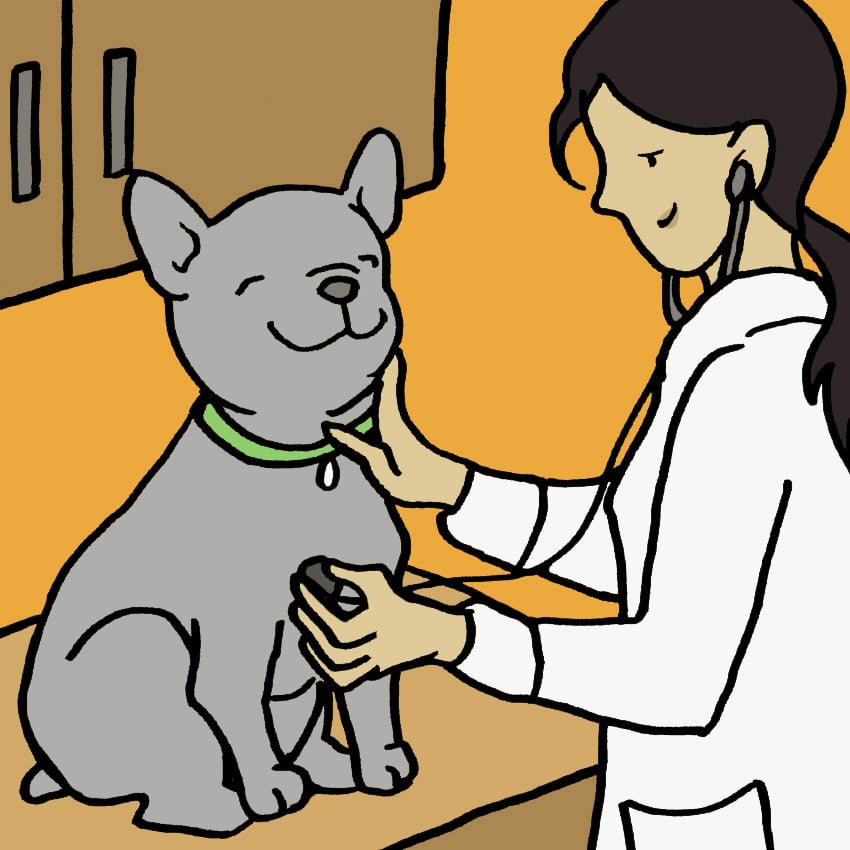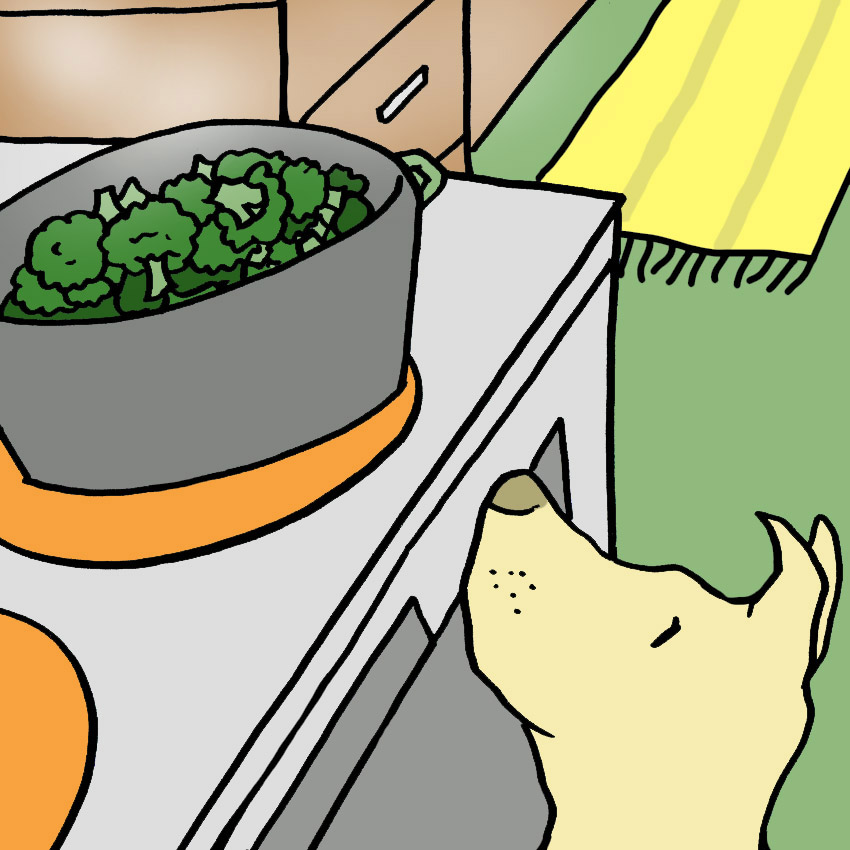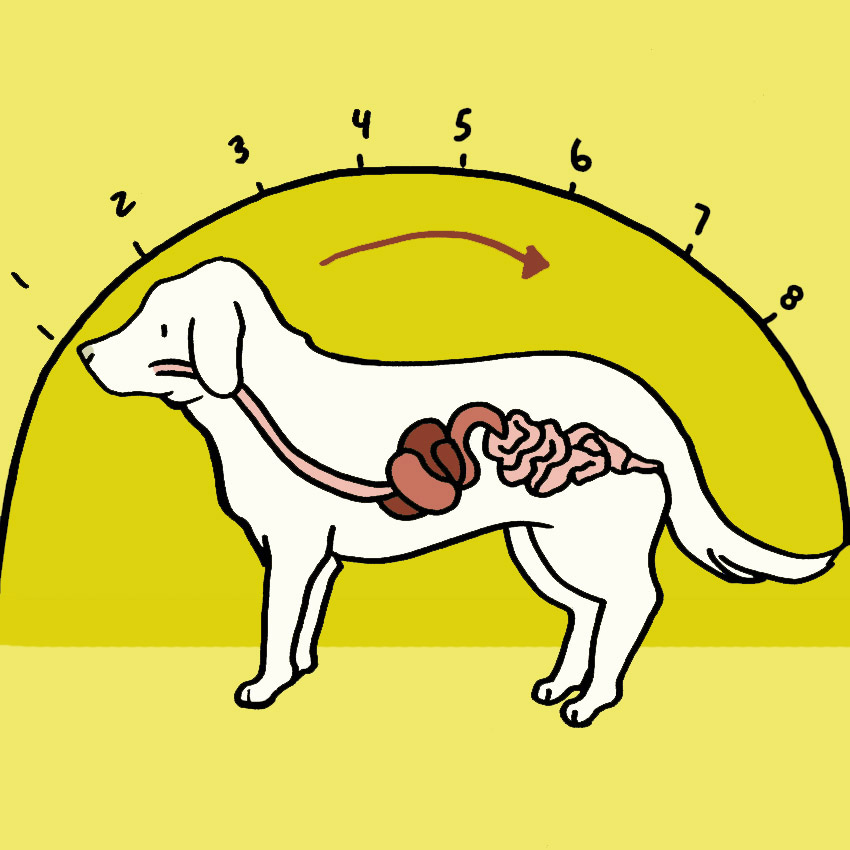One of my go-to meals is a delicious salad filled with my favorite greens and fresh vegetables. I typically like to mix romaine with some chopped vegetables like carrots, tomatoes, beets, bell peppers, and broccoli florets, with an added sprinkle of bacon on top.
My dog loves to sit under my feet as I prepare my salad and beg for food. I’ve been known to “accidentally” drop a piece of bacon for him. Out of everything I put in my salad, though, bacon is by far the least healthy. Should I actually be dropping a piece of broccoli for my dog instead? Can dogs eat broccoli, and is it a healthy treat to feed them?
Dr. Jessica Potosky, Doctor of Veterinary Medicine (DVM), says, “Yes, dogs can eat broccoli. I would only give them a piece or two at a time to prevent excess gas or other gastrointestinal issues… [such as] vomiting, diarrhea.”
Before you feed your dog broccoli, however, it's important to understand the health benefits and risks as well as the best way to cook broccoli for dogs.
Broccoli Health Benefits For Dogs

Broccoli can be a safe and healthy treat for dogs to eat, but only in moderation. According to Dr. Potosky, “There are health benefits; it’s a safe treat to give dogs instead of the milk bones or calorie dense treats that cause pets to gain weight. If a dog is on a good quality dog food though, there is no need to supplement their diet with vegetables.”
Broccoli has more nutrients than cauliflower and is a good source of vitamins C and K. However, broccoli also has more calories and fiber than cauliflower. While broccoli is a dog-friendly vegetable and is not toxic to dogs, they can suffer harm if too much broccoli is fed to them.
Dogs and other pets have bodies with the same basic systems we do, but their bodies don’t function exactly the same way ours do. Therefore they can’t (and probably don’t always want to) eat the same things we do. If you cook a roast, your dog will be sitting right there with his knife and fork ready for you to bring it out of the oven, but when he drools at the sight of a raw bone, are you similarly interested?
Your dog might want to eat a lot of what you eat just because you eat it. You may find that if you accidentally drop a mini-cucumber you’re slicing at the kitchen counter, your dog will snatch it up and eat a quarter of it before he realizes you aren’t chasing him and then lose interest.
How To Cook Broccoli For Dogs

It’s usually best to cook broccoli or any other vegetable before feeding it to your dog because he may swallow it whole and his body would then need to work extra hard to digest the raw vegetable. Dr. Potosky suggests steaming the broccoli and stems, which are also fine for dogs to eat. If you do feed your dog broccoli, it should be served plain. Do not add any type of seasoning because, as Dr. Potosky points out, “Garlic and onion powder are in a lot of seasoning, and this can be toxic!”
Just as you would avoid foods your doctor has told you are harmful to your body or foods you’re allergic to, you’ll want to double-check before feeding anything to your dog that isn’t dog food. Dogs can’t do this for themselves and will sometimes even enthusiastically eat things that are not food that they can get their little paws on. Snoopy, Charles Schultz’s cartoon dog, famously said, “Anything that falls on the floor is mine.” That accurately captures a dog’s opinion, so we need to do our best to keep harmful foods off the floor. Dr. Potosky warns, “Always check on types of foods before feeding them because there are foods that we can eat that are toxic to dogs!”
Why Can’t Dogs Eat Everything We Eat?

Let’s look at your dog’s basic body system, The human digestive tract begins with the mouth, teeth, and saliva and travels through the whole upper body before it even gets to the large and small intestines. When combined, the intestines range from 25 to 28 feet in length, according to an essay by Anne Marie Thomasino in The Physics Factbook, An Encyclopedia of Scientific Essays.
In contrast, a dog’s food passes through the mouth and the esophagus, but digestion really gets its start in the stomach, where large pieces of meat and bone can be broken down by hydrochloric acid. “The dog actually has the shortest digestive system of mammals and it takes roughly eight to nine hours for the whole digestive process,” Vetinfo reports.
That’s quite a big difference between dog and human digestive tracts. For that reason, it’s important that we check if a vegetable or fruit is safe for dogs before feeding it to them.
If you’ve learned some helpful information in this article that you can use to take care of your best friend, please SHARE it with other dog lovers! Many people assume anything they can eat their dog can eat, so they don’t know to be careful. We all want to keep our dogs safe and healthy.




